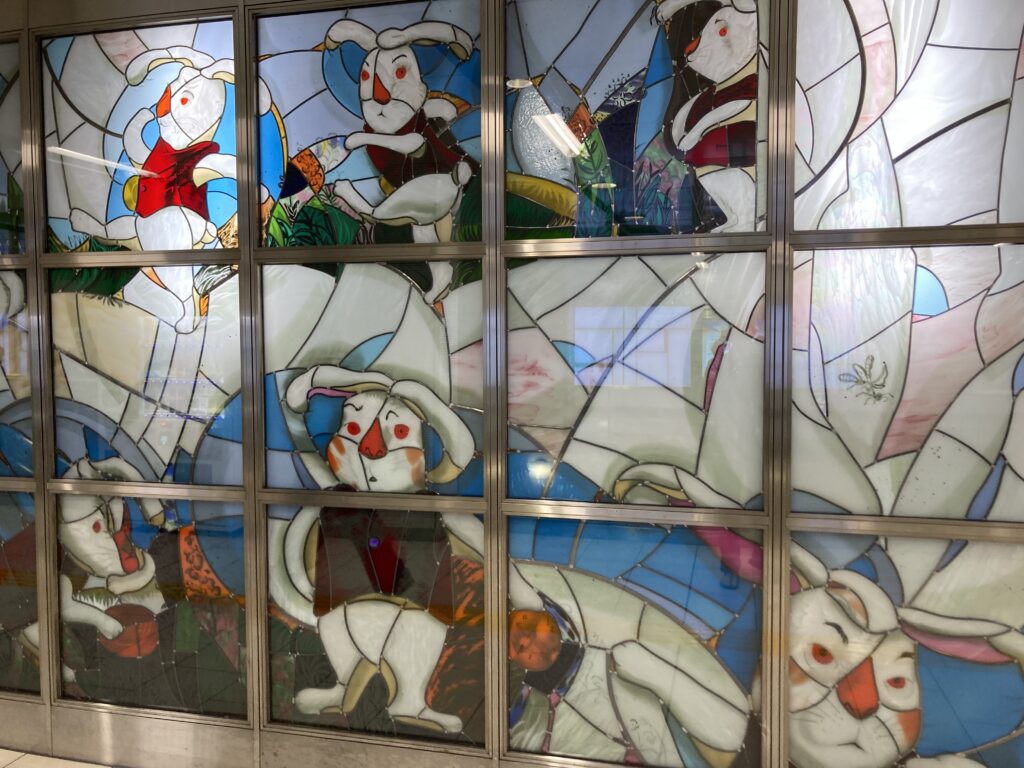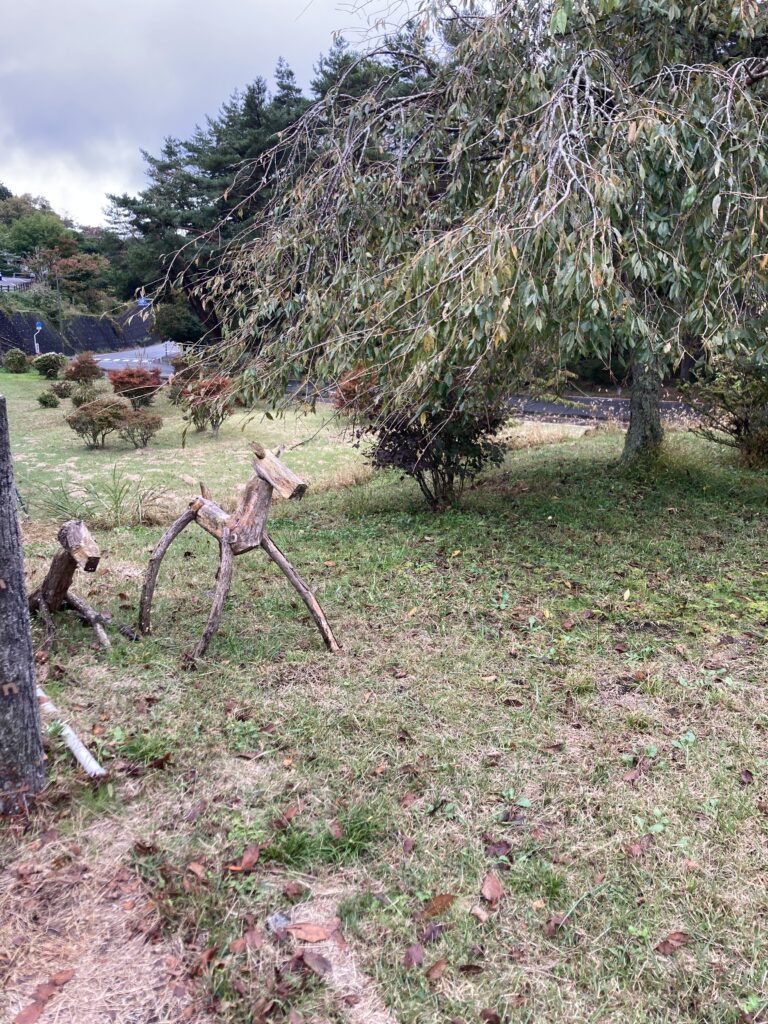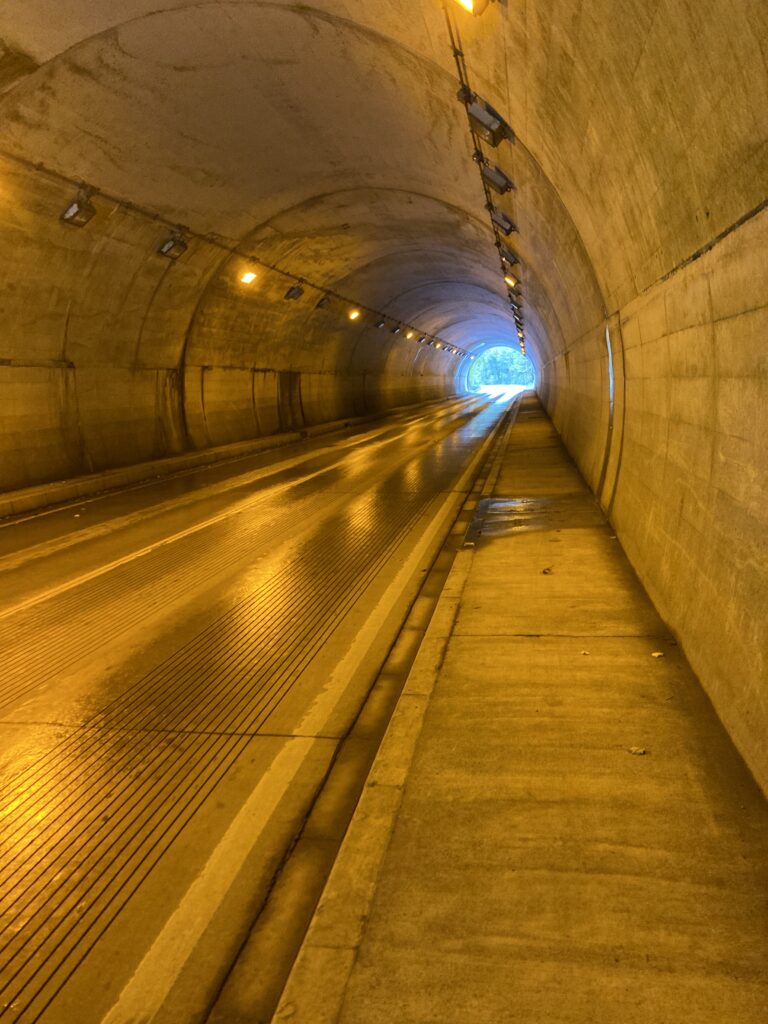I’m not used to the traditional National Park Services anymore, that much is clear. It’s made clear by the oppositional vibes of the people around me, the families pulling their children just a little closer- maybe not even realizing they’re doing it. I step into the restroom and look at myself in the mirror and see I’m much as I have been. I try to make myself objective, try to remember a way I looked before the way I look now. I’ve certainly been neglecting my beard and my clothes are in tatters but they are clean and I am clean. That’s the one promise I made myself, leaving for this trip.
That I wouldn’t let myself stink.
‘What is this? A common National Park Site in this, a normally non-normal guide to America’s roadside attractions?
It’s true, and it’s not the only one. There are gray areas when it comes to the Wayside and whole sections of this book are devoted to the complexities of understanding them. This, though, ‘The Glass Anthill,’ isn’t so gray as all of that. It just so happens that the National Parks set up shop next to the Wayside and, in doing so, became an extension of the long road we champion in this publication.
Pay the fee for ‘The South Nevada Fossil Beds’ but ignore the old bones- they’re just like all the others you’ve seen. Turn your attention, instead, to the corner in the southeast. There, you’ll find ‘The Glass Anthill.’’
What the guide neglects to mention is that ‘The South Nevada Fossil Beds’ is mostly subterranean. There is a welcome counter on the surface and a few rooms for glancing at fossilized specimens and watching a looping documentary about the site’s discovery that feels much longer than its 20-minute runtime. The man at the front welcomes me and guesses right away that I’m here for the anthill- this is the first indication that my appearance is giving away more than I know.
“Our manager has put a screen on the glass,” he says, “And you’re not supposed to pull it back because it might disturb the ants.” The man looks over his shoulder. “Just be quick about it if you do.”
When the man hands me my change I note several small ants tattooed on his knuckles and wonder if I shouldn’t have done a deep dive regarding potential cults or ant-based secret societies. Too late now, but I pointedly spend several minutes glancing over the displays and watching the slog of a video in the viewing room before descending the grated metal steps that lead to the wider display.
‘The South Nevada Fossil Beds’ distinguish themselves by this viewing area where the fossils can be seen in the undisturbed earth and among the various rock and mineral layers that several geologists insist are very important to their formation and really very interesting overall. It’s the sort of thing a normal person can look at for about a minute before the novelty wears off and, considering this location doesn’t even have a gift shop, I imagine somebody at the National Park Service agrees with me. This place isn’t making any best-of lists.
I do my lap around the main attraction before doing a 360 and realizing I have no sense for the cardinal directions underground (or ever, really, even on the surface). I pull up an app on my phone that points me toward a cardboard standee of a poorly designed fossil mascot, enthusiastically reminding children not to take fossils from public land. The ‘screen’ on either side of the mascot is a vaguely translucent pattern of dinosaurs marching about a prehistoric wasteland, most likely intended for windows in children’s rooms.
Most of my fellow visitors are busy on the other side of the exhibit and seem to be ignoring me anyway, so I make my way over to the standee and, rather than push behind it, which seems infinitely more suspicious, I confidently pick it up and move it to the side and start the arduous process of pulling up the corner of the fossil film with the fingernails I’ve kept chewed down to skin for as long as I’ve been alive. After only a moment, I notice that the whole wall seems to be moving behind the screen and I take a step back, some instinct for danger or disgust suddenly taking control. I press my hand to the screen and am reassured by the smoothness of glass behind it and, when I finally can peel it back, I find the massive ant kingdom the guide suggested would be there.
It’s bigger than I expected and somehow clearer than I expected too. I trace the paths of the ants to little chambers and, without any more knowledge than anyone else who was once a boy child in a world with ants, I am able to understand what those chambers are for. I see a resting chamber. An eating area. A place for burying the dead. I follow grander dirt paths to where the queen is birthing eggs and I follow those same paths back to where the eggs are being nurtured to maturity.
The longer I look, the more I see things that simply can’t be true. One chamber looks like a little ant gym. Another holds a vacant pavilion, maybe and empty theatre? Far off in the distance there are smaller chambers with insects that aren’t ants at all and I wonder if it’s a prison or a zoo.
My attention is so focused at this point that I don’t notice a child at my side before they shout back to their friends or siblings:
“Come check out what the weird guy found!”
Before I can put a word in, there are several more kids around me and they have toppled the standee and begin to tear at the plastic screen. To reveal depressing ant suburbs and long tunnels that must lead to other ant cities. I put enough space between myself and the chaos that, by the time parents and employees of the site arrive, nobody remembers it was me who started this.
That is, until I notice an ant on the floor, seeming to consider me to whatever extent its tiny senses can comprehend a behemoth. The ant seems curious, at first, and then accusing and, as it turns to move back toward whatever crack in the wall must allow them to walk freely in the exhibit, I step on it and leave. I don’t know what hell the ants can bring down on me, but I don’t need it today.
-traveler





